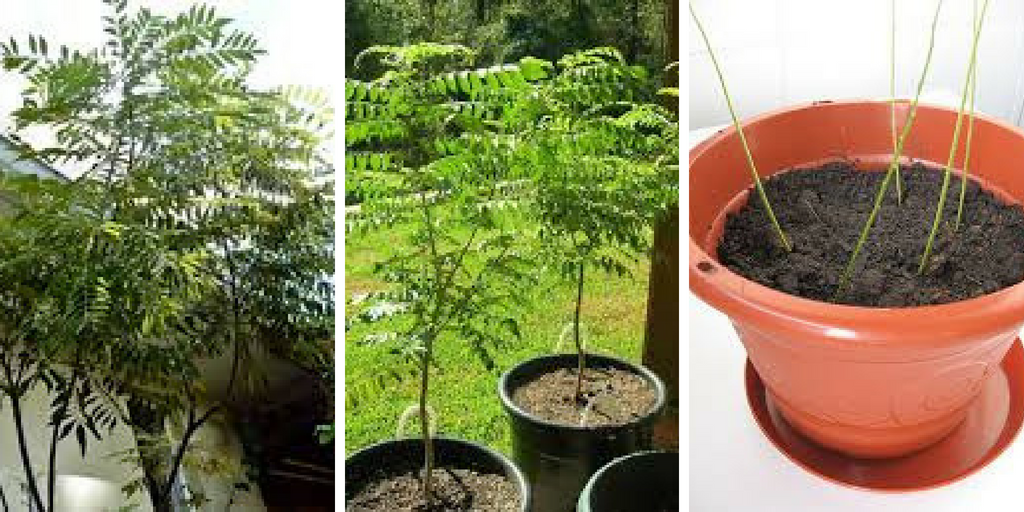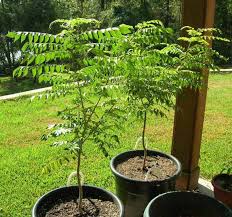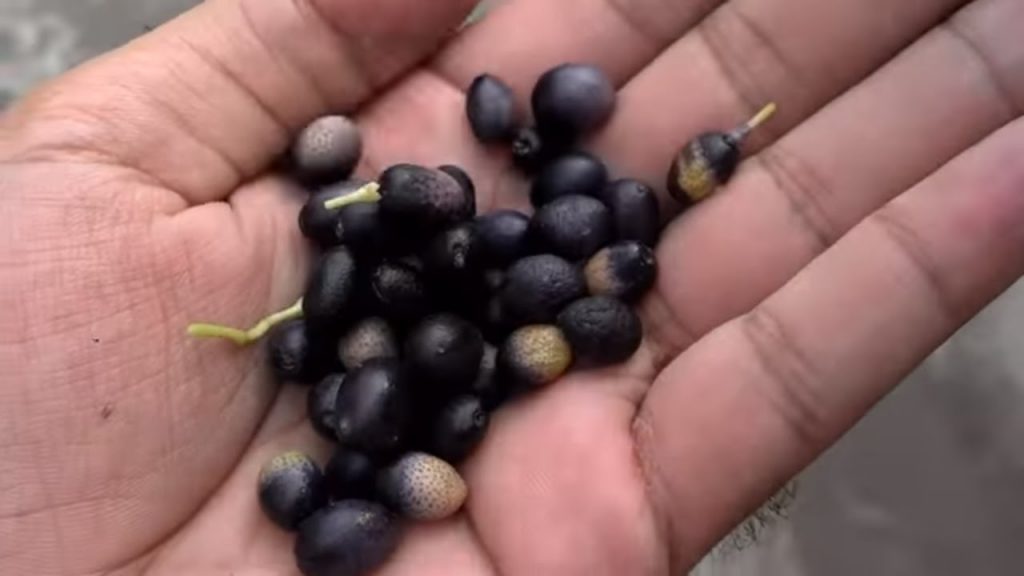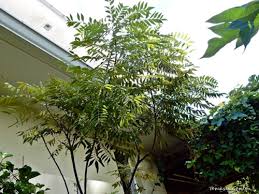Curry Leaf is one of the most popular herbs around the words. It originates from the Indian subcontinent where it is widely used in many dishes. It is a delicious herb that adds a unique aroma and flavor to your cooking. Learning how to grow Curry leaf is not difficult as long as you know the necessary steps.
There are three different varieties of Curry leaf, regular, dwarf, and gamthi. The regular variety is characterized by its fast growth. It grows tall and fast and it is widely available in grocery stores. The dwarf variety has longer leaves than the regular variety, but, it is shorter. The gamthi variety is known to be the most fragrant variety. It grows slowly and has smaller leaves than the other two varieties.
Cury leaf is an edible herb. It has many health benefits too. However, its seeds are poisonous. Therefore, make sure you remove them before eating this herb. Due to its admirable shape, curry leaf is also fit to grow indoors for decorative purposes. If you are interested in growing this exotic herb, below you will find a detailed guide on how to grow Curry leaf.
1. Choosing an adequate container
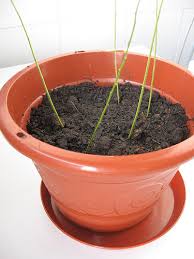
For growing curry leaf, it is better to use containers rather than gardens. Most Curry leaf seedling and cuttings grow faster and thrive better when they are planted in pots. Besides, planting curry leaf in pots allows you to change its position to meet the growth needs.
Keep in mind that you should choose a deep wide container otherwise, you will need to transplant your herbs into bigger containers once they grow. This herb will need at least a 30-gallon container when it is 10 years old.
2. Choosing the right position to meet growth requirements
All the above-mentioned varieties of curry leaf need the same requirements to grow. The first growth requirement is access to sunlight. Curry leaf needs a direct full sun to grow and thrive. Since it is a subtropical herb, it prefers warmth and heat. However, you should not expose your plants to excessive heat.
Providing your plants with full sunlight will protect from losing its leaves. During winter, since you are growing your plants in containers, make sure that you place them in the sunniest area of your garden. Bring them indoors when it is too cold on the outside.
Curry seeds need a hot warm area to germinate. They need at least a temperature degree of 68 F. If you live in a cold climate area, it is advisable that you use grow lights for your plants.
3. Soil
Curry leaf is a delicate help that does not adapt to a poor quality soil. Therefore, in order for your seeds to germinate and for your plants to grow, you should use a well-drained soil. It is also recommended that the soil is slightly acidic.
The best way to ameliorate the quality of your soil and make it well drained and fertile is to add sand and manure.
4. Planting and transplanting
Cury leaf plant can be grown either from seeds or from cuttings. Either way, you need to choose the sunniest spot in your garden. Seedlings usually take 1 to 2 years to be established. Naturally, seeds will take longer. It is preferable to grow this herb from seedling as seeds are difficult to grow.
For seeds, It is compulsory that you buy fresh seeds. In order to better their germination rate, you should clear away the hard outer shell before sowing. Once you sow them, keep them warm and make sure that the temperature does not fall below 68F.
Seedlings are easier to plant, all you need to do is to buy a cutting that is at least 3 inches tall and has several leaves. Remove 1 inch of bottom leaves and immerse the cutting (the bare stem without leaves) in your soil. Keep the soil damp. In three weeks, the roots will start to grow.
If you haven’t used a wide deep container, you will need to transplant your plants into bigger containers as they grow. It is crucial that your containers meet the growth requirements of this herb. When transplanting, be careful with the roots. If you break them your plant will not grow. You should also add a good quality potting soil.
If you are not a patient person and you don’t want to wait a couple of years to harvest curvy leaf, you could buy this popular herb from your local nurseries or online. It is available on Amazon.com for 30 dollars.
5. Watering
The curry leaf requires regular watering during spring and other milder seasons. It is enough to water it once a week. However, although this plant loves warmth and heat, it does not tolerate drought. Therefore, during the summer, make sure that you water your plant twice daily if needed.
Check out the soil to see if it is completely dry before you water otherwise you will cause roots’ rot and reduce watering to the minimum during winter when the plant is dormant. You will know that your plant is dormant when its leaves turn yellow and start falling.
As it grows bigger and older, its water needs grow with it. It is advisable that you start watering it more frequently. Basically, this plant needs the basic skills of gardening to grow. Therefore, it is an ideal choice for beginner gardeners.
6. Fertilizing
When your plant is still young, don’t apply strong fertilizers. Since it is not a heavy feeder, it is best to feed it with a liquid fertilizer once in every three to 4 weeks. In order to boost foliage growth, apply 3 teaspoons of iron sulfate or 1 teaspoon of iron chelate once a month.
If you want your plant to grow fast and well, you should dissolve 1 teaspoon of Epsom salt in 1 liter of water and feed it to your plant every 3 months. It will help your plant develop green leaves in the spring, summer, and fall. You could also use buttermilk. It is considered the best homemade fertilizer for curry leaf. It consists of diluted curd and yogurt.
7. Pruning
Pruning helps the plant to maintain its health and produce a heavy amount of leaves. You should prune the plant once a year during spring. Pinching the tips of the branches is an excellent way to ensure that your plant will give you many leaves. If your plant grows up to 5 meters tall, you should prune it several times every year.
8. Pests and diseases
Due to its strong scent, the curry leaf manages to keep many insect pests and diseases away. It usually grows without being infected. However, depending on your climate, there are some pests and diseases that may cause you problems.
Kowing your plant is infected is easy, you will notice some white, brown, or black spots on its leaves and stem. When the leaves become sticky or curly that also means that your plant is infected. These diseases are mainly caused by Aphids, scales, Citrus mealybugs and Psyllids.
9. Harvesting
Since harvesting the curry leaf encourages the growth of new leaves, you could harvest the leaves whenever you want to. Pick the leaves from the herb and use for adding flavor to your cooking. Fresh leaves have a stronger taste than dried leaves.
These steps offer you the ultimate way to successfully grow Curry leaf. Follow these steps and you will enjoy the benefits of this healthy herb. This article aims not only to show you how to grow curry leaf but also to encourage you to grow this herb for its versatile uses.
If you are interested in growing your own healthy herb, you could also read about growing turmeric, dragon fruit and star anise. There is also a selection of the most decorative healthy indoor herbs if you want to check it.
Enjoy gardening and if you want to show us your support, share our posts with your friends.

